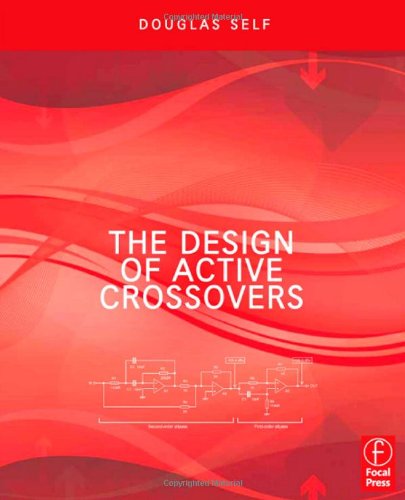The Design of Active Crossovers pdf
Par paige evelyn le dimanche, juin 26 2016, 08:12 - Lien permanent
The Design of Active Crossovers . Douglas Self

The.Design.of.Active.Crossovers..pdf
ISBN: 0240817389,9780240817385 | 605 pages | 16 Mb

The Design of Active Crossovers Douglas Self
Publisher: Focal Press
A passive crossover has the same job and it is designed to work just like a active crossover.The only big difference is they make your car audio system less efficient this is because it filters out audio signals that have already been amplified. I have also wanted to design an active crossover, both as a kit and for my own projects. I have no problem understanding second order. I am thinking about using a 2 way active crossover in my current 3 way speaker design. For cataloging The design of active crossovers by Douglas Self, I felt that there had to be more LCSH to consider for the record: Image. This is only semantics, but I am still curious. This helped with the design of the drive units, cabinets, crossovers and important detailing such as the size, shape and profile of the midrange dome dispersion flange to provide optimal sound distribution and integration. Increased from flat), a detail also borrowed from PMC's professional background and experience with active crossover design. �Audio crossovers” is not a valid sub. The mid and tweeter would use a passive XO. Hello, I would like to know a design approach to multiple-order crossover for a 3 way speaker system. With the exception In another first, the fact.12 is the only passive loudspeaker to incorporate a true LF boost setting (i.e. Both of those things would incorporate a few (or lots of) buffer stages. The active crossover would be between the woofer and Midrange/Tweeter. Crossover Points & Order At the crossover point, power to each loudspeaker is reduced -3 dB (1/2) so total sound energy is 1. I am planning on a multiple amp setup in my crew cab, most likely fed by a RF 3sixty.3. Isn't this technically no longer an active crossover design? Electronic active crossovers can have extra compensating circuitry. In some passive crossovers this is adjusted for by reversing the polarity of adjacent loudspeakers. As I understand it, having an "active crossover" implies that the crossover is happening *before* the amping step. The Design of Active Crossovers by Douglas Self F..al Pr | 2011-07-08 | ISBN: 0240817389 | 608 pages | PDF | 10.92 MB The Design of Active Crossovers is a unique guide to the design of h. At the crossover point More recent design trends are for power to be decreased to -6 dB (1/4) to each loudspeaker at the crossover point, and the slope rate can be selected.